[Picture: Golf Digest US]
In the 35 years since Cypress Point Club took itself out of the rotation for the PGA Tour’s Bing Crosby Clambake—otherwise known as the AT&T Pebble Beach Pro-Am—there have been few glimpses of it from those who are outside of its 250 members and their grateful guests.
MORE: Rory McIlroy says he hasn’t done enough of one thing since winning the Masters
In 2018, a Cypress member championed hosting a Walker Cup-style men’s college tournament, the Stanford Classic. The event featured eight teams—with the most notable news that first year being University of Texas sophomore Kramer Hickok tying the course record of 63 in a practice round. Renamed the Cypress Point Classic, the event was played through 2023, so plenty of US college kids have had their chance to be wowed.
Otherwise, like another famously private course, Pine Valley, that it jockeys with in the America’s 100 Greatest rankings, Cypress Point remains a tantalising mystery, with any opportunity to see it considered a true golf treat. Therein lies a big reason why there’s considerable anticipation for this weekend’s playing of the 50th Walker Cup Match between the US and Great Britain & Ireland. Golf Channel will have 12 hours of coverage on Saturday and Sunday (Sunday and Monday morning AEST), and after a limited number of tickets were sold through a lottery.
The beauty of a big amateur event being contested at such a revered and mystical club is that it gives us the opportunity to dive deeper into the lore and history of Cypress Point—currently ranked No. 3 in Golf Digest’s America’s Greatest 100. And at 96 years old, there are almost countless tidbits to mull and savor. Here, we present some of our favourites.
The First Lady of Cypress 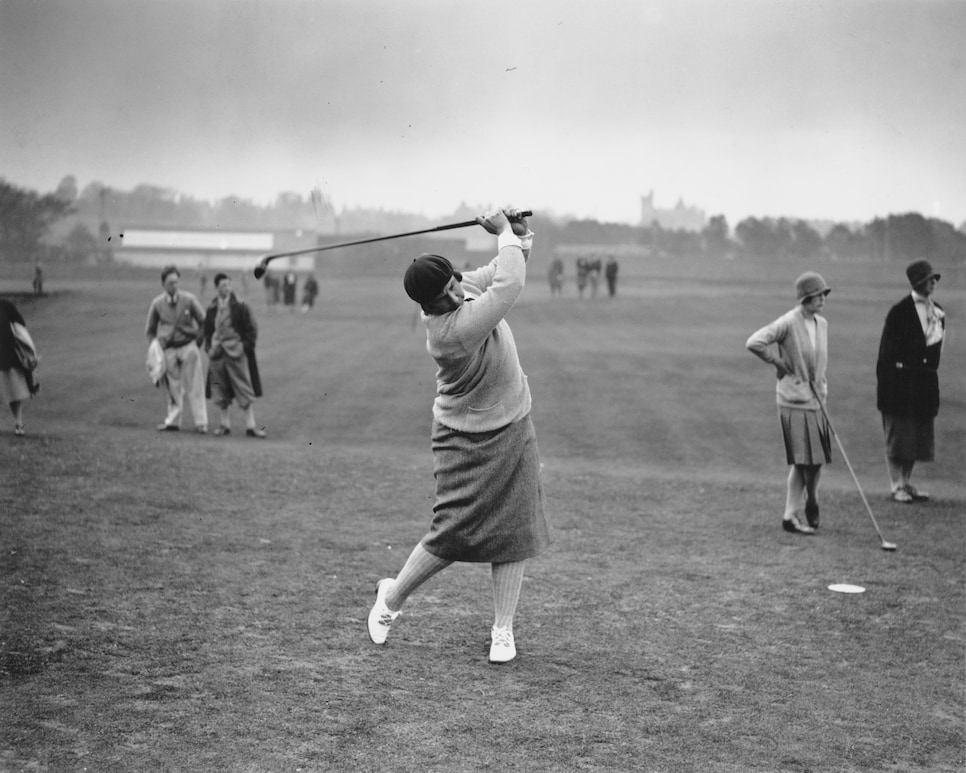
Marion Hollins hits a shot during the 1929 Ladies Open Golf Championship at St Andrews. Picture: Puttnam
The first sentence of Wikipedia’s page on Marion Hollins describes her as an “American amateur golfer.” That is accurate, but laughably inadequate considering she is one of the most influential and successful—if underappreciated—women in golf during the first half of the 20th century. Not only did she lead the development of Cypress Point and Pasatiempo in California, Hollins is largely credited with putting together Bobby Jones and Alister MacKenzie for a little project they did in Augusta, Georgia.
Born in Manhattan in 1892 to a wealthy Wall Street broker and raised on Long Island, Hollins was a Guilded Age child who believed anything was possible. She loved sports of all kinds and took up golf when her father had a small layout built in their yard.
Hollins first entered the US Women’s Amateur at 14 and won the championship at age 29 in 1921. With considerable clout, she founded the first women’s private golf club in the world, Women’s National Golf & Tennis Club in Glen Head, New York (The club foundered during the Depression and exists today as Glen Head Country Club.)
RELATED: Cypress Point, Pine Valley, Oakmont: How the Walker Cup curated golf’s best host courses
Hollins’ father lost his fortune, and in the mid-1920s she set out on her own for California, where she played top-level polo and met Samuel Morris, the lead developer of Pebble Beach. Already with a spectacular links course opened in 1919, Morris charged Hollins with finding a spot for an ultra-private club. Just south of Pebble Beach, she identified a 150-acre parcel that Spanish settlers called “La Punta de Cipresses.” Hollins was so convinced of what could be accomplish there that she brought the land from Morris for $US1,000 an acre and began soliciting memberships.
Hollins identified American architect Seth Raynor as the man to design Cypress Point, and they walked the grounds. Unfortunately, Raynor was only able to map a layout before he died of pneumonia in 1926.
Enter MacKenzie, a then-50-something former British military surgeon whose designs had been all overseas. They traversed the land frequently, and as the story goes, MacKenzie was dubious about creating a late-round, 210-metre par 3 over the gorgeous chasm of rocks and water. Then Hollins dropped a ball, smashed a shot that would land on a future green, and one of the world’s most famous par 3s—the 16th at Cypress Point—was baptised.
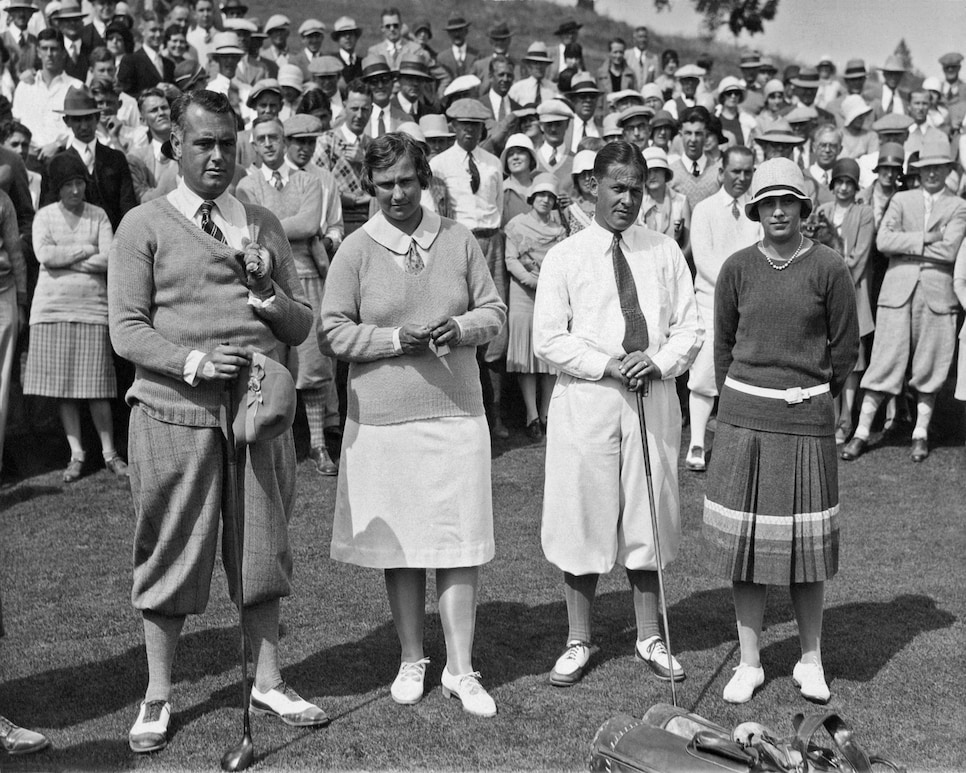
Marion Hollins (second from left), played the ceremonial first round at Pasatiempo in 1929 with (from left), Cyril Tolley, Bobby Jones and Glenna Collett. Underwood Archives
MacKenzie would later write of the Cypress Point experience: “The formation of the club was due to the energy and foresight of Miss Marion Hollins.”
Cypress Point opened to predictably rave reviews in 1928 and Hollins enlisted MacKenzie to design another course, Pasatiempo, for her own real estate development in Santa Cruz. It, too, received massive praise, and on opening day in 1929 Hollins played in the first foursome that included Bobby Jones.
Through their friendly relationships formed with Hollins and a mutual love for St. Andrews, MacKenzie and Jones hit it off nicely, and it was Jones who then tabbed the architect to create Augusta National and open it in 1931. Hollins, meantime, spurred the founding of the women’s version of the Walker Cup, the Curtis Cup, and was captain of the first US team in ’31.
Sadly, both Hollins and MacKenzie met tragic ends to their lives. Hollins suffered lasting injuries in a head-on car collision with a drunken driver, and she died from a stroke at the age of 51. Despite creating some of the world’s most renowned courses, MacKenzie was broke and living in a home provided by Hollins near Pasateimpo when he suffered a fatal heart attack, at age 63, in 1934, a couple of months before the inaugural Masters. His ashes were reportedly spread over the fairways at Pasatiempo.
MacKenzie’s Cypress Vision
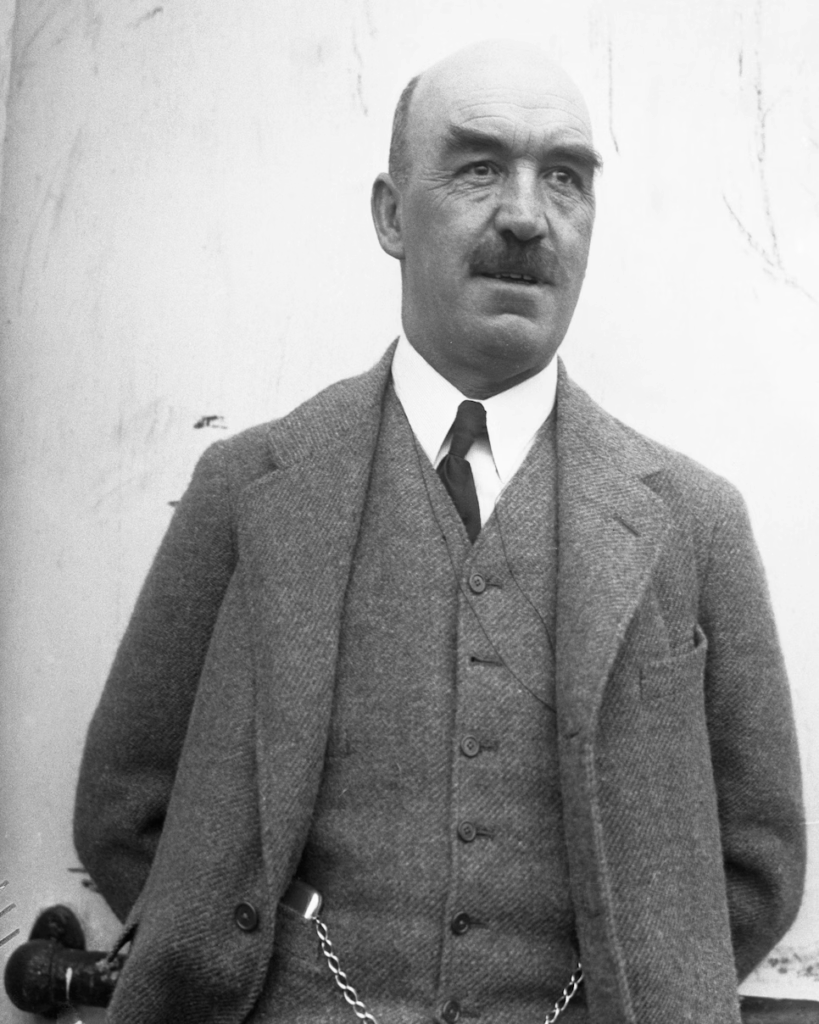
Dr. Alister MacKenzie, in an undated photo. Bettmann
In an article that MacKenzie wrote for a San Francisco publication in late 1928, the architect recounted how a prominent member of Pine Valley encouraged him to see a new course on the ocean in California. MacKenzie’s reply was basically this: I know about it, because I designed it. “Cypress Point,” he wrote, “has exceeded our most sanguine expectations.”
MacKenzie knew he had a once-in-a-lifetime palette on the Monterey Peninsula, and he set out to create a masterpiece from what the land gave him. Cypress Point has been described as a three-act play with a jaw-dropping curtain-dropper: the first five holes in the pine forest; the second seven among the massive dunes; and the third and spectacular final six along blue-green water and white caps of the Pacific Ocean.
MacKenzie took great pride in embracing the landscape—so much so that he challenged anyone to define where nature began and course construction ended. “The best golfing terrain I have ever had to deal with,” he said.
As a Scotsman, the St Andrews Old Course was MacKenzie’s previous vision of golf perfection, but he was not shy to admit that he believed he had bested it at Cypress. “For years I have been contending that in our generation no other golf course could possibly compete with the strategic problems, the thrills, excitement, variety and lasting and increasing interest of the Old Course, but the completion of Cypress Point has made me change my mind,” MacKenzie wrote.
Beating the budget
The developers at Cypress Point consulted accountants about its construction, and the dollar figure put on it was $US150,000. MacKenzie scoffed and said he could do it for $100,000. And to his great satisfaction, the work ultimately came in under budget at $90,000.
MacKenzie noted in his 1928 article that every possible step, creatively and agronomically, was taken to ensure that everything about Cypress was first-rate—from its carefully vetted grass to the presence of water fountains in the shade.
“We removed about 15 acres more of trees than were necessary from a golfing point of view, for the purpose of opening out fresh vistas to the ocean and sand dunes, and increasing the beauties of the place,” he wrote. “We constructed more than twice the number of tees agreed upon. … We enlarged the fairways towards the tees, so that nowhere would the dub have a compulsory carry of more than 80 yards (72 metres).”
A “dub” back then was lingo for a golf hack, and MacKenzie apparently wasn’t counting that 180m carry over the cove at 16—which undoubtably requires pulling driver on the par 3 for some hapless high-handicappers.
The membership 
A view of the Monterey Colonial-style Cypress Point clubhouse, designed by George Washington Smith. David Madison
From the outset, Cypress Point was created as a highly exclusive oasis for captains of industry, and that hasn’t changed in a century, counting it among the likes of Augusta National as having the most sought-after memberships in the world. Indeed, at 250 stated members, Cypress Point has fewer than Augusta’s reported 300.
We don’t know the count of the lucky few who belong to both, but among them is former US Secretary of State Condoleezza Rice, who is highly visible each year at the Masters wearing her green jacket, having become one of the first two female members of Augusta in 2012. Being a member at Cypress Point is far less conspicuous, though Rice provided the narration for the USGA’s hole-by-hole video of the course that was released this week.
Cypress Point’s membership roll seems to be even less publicised than Augusta’s, with a short list of identified well-known members including Clint Eastwood, Charles Schwab and Heidi Ueberroth. The membership fee has been reported to be $US250,000, with the costs of operating the club coming from each member splitting equal annual dues, no matter their financial standing in life.
The membership is said to be particularly staunch in its protection of Cypress Point and has resisted any thoughts of “renovations” that have occurred at nearly all of America’s most renowned courses. As reported by Golf Digest, the club agreed to host the 2025 Walker Cup only with the stipulation that the USGA made no changes to the course.
Speaking to Sports Illustrated in 2010, architect Tom Fazio, who has done many a course freshening project, said of the club’s view, “Defiance is too strong a word, but Cypress is a unique place, and change is not a priority.”
It is truly remarkable to consider that when MacKenzie was finished with Cypress Point in 1928, the scorecard showed it was brutish 6,871 yards (6,282m) from the championship tees, 6,376 yards from the regular tees and 5,975 yards from the forward tees. And we think golf is confounding now? Understand, this was an era when hickory shafts and persimmon heads were the standard, with steel shafts not becoming prevalent until the 1930s. The golf balls were of the “Haskell” variety—a solid rubber core wound in rubber bands, with a mesh outer cover.
It’s incredible, then, that Hollins managed to hit a ball over the gap at Cypress’ 16th to settle on it as a par 3. She was a great player, to be sure, but she also held for a time the women’s scoring record at Pebble Beach. Her achievement: 90 strokes. That’s how hard the game was.
By the 1956 playing of “The Match” at Cypress Point, the equipment was considerably more advanced and the golfers reportedly that day blitzed the course for scores of 63 (Hogan), 65 (Venturi) and 67 (Nelson and Ward)—though a Golf Digest examination in 2008 by Bo Links of Frost’s account put those numbers into question. Whatever the final tallies were, the shot-making was impressive, considering the players were tasked with hitting 6-irons that flew 145m and 9-irons that maxed out at 110m.
Fast foward to now, and the distance on paper for this Walker Cup is 6,620 (6,053m), to be adjusted over the two days, so about the only time we might see a 6-iron is a player going for a par 5 in two. Still, it says something about Cypress’ test that it hasn’t yielded better than a 63 over 10 decades. The others beyond Hickok and Hogan to share the course record: 14-time PGA Tour winner Adam Scott, Stanford golfer Jim Liu, and two of the club’s head pros, Jim Langley and the current top man, Casey Reamer.
For those who will play or watch the Walker Cup, it’s worth reading former Golf Digest architecture writer Ron Whitten’s opinion (the full text is at the bottom of this story) on Cypress being “defenceless” in the bomb-and-gouge age. A sampling:
“MacKenzie relished the idea that Cypress Point would offer all sorts of ways to play every hole. That philosophy still thrives. … Certainly one way to play Cypress is the full-bore, take-dead-aim, grip-it-and-rip-it, bomb-and-gouge approach. But it’s also a course where finesse still matters, where course management is still rewarded.
“Yes, long bombers can go low at Cypress Point these days, but so can short-hitting, thoughtful players, who much like sailors in a storm tack their way around bunkers, trees, dunes and ocean coves.”
Cypress loves and loses the PGA Tour 
In 1990, fans watch a golfer tee off on Cypress Point’s 16th hole at would be the last time the course was part of the Pebble Beach Pro-Am rotation. David Madison
Bing Crosby started his annual Clambake at Rancho Sante Fe Golf Club in 1937 and after World War II moved it to the Monterey Peninsula in ’47. Crosby was a member at Cypress Point, so including it in a three-course rotation was a no-brainer, along with Pebble Beach and Monterey Peninsula Country Club.
From then until 1990, pro golfers, celebrities, onsite spectators and television viewers relished being able to see such a wondrous layout. Over four decades, the Crosby winners who graced Cypress would be a Who’s Who of golf: Sam Snead, Ben Hogan, Byron Nelson, Cary Middlecoff, Billy Casper, Ken Venturi, Johnny Miller, Gene Littler, Tom Watson, Ben Crenshaw, Tom Kite, Hale Irwin and Fuzzy Zoeller. Jack Nicklaus won three times in the Cypress Era and Mark O’Meara twice, including the final two there.
Then, after the 1990 Crosby tournament, Cypress’ relationship with the tournament and PGA Tour came to a stunning end.
Following protests and advertising boycotts for the 1990 PGA Championship at Alabama’s Shoal Creek because it was exclusive to whites, the PGA Tour established a policy that it would not go to clubs that did not allow members of colour. At that point, Cypress Point had not admitted a Black member and resisted being told that it needed to do so at the urging of the tour. (That same year, Augusta National accepted its first African American male member.)
As late as 2004, the San Francisco Chronicle reported there were no Black members at Cypress Point, and it’s not clear when that changed, but Rice is obviously a member now.
“These are mostly CEO-types who are used to getting their own way, and they didn’t want to be told what to do,” an anonymous Cypress member told Sports Illustrated writer Jaime Diaz in 1997. “They didn’t want their membership practices under a microscope, not just as they pertain to minority candidates, but for anybody.”
The loss of Cypress Point was met with sadness and consternation by the PGA Tour’s players, summed up by Johnny Miller, who lamented, “With Cypress, this tournament had the three greatest courses anywhere in the world in one area. That alone put it above the other tournaments. Now that specialness is gone.”
Let’s make no mistake, though: Tour pros of every generation since have made pilgrimages to play Cypress Point, and the iterations of Crosby’s tournament survived and thrived under the talents of Tiger Woods and Phil Mickelson, even if, and ironic to the circumstance, fans missed seeing Woods compete in his prime on one of the greatest courses in the world.
There are no doubt Cypress Point members who are relieved to have not faced the masses that Woods attracted. Unfortunate, maybe, but it figures to make this week’s sights and sounds of the Walker Cup all the more treasured.
1 / 7 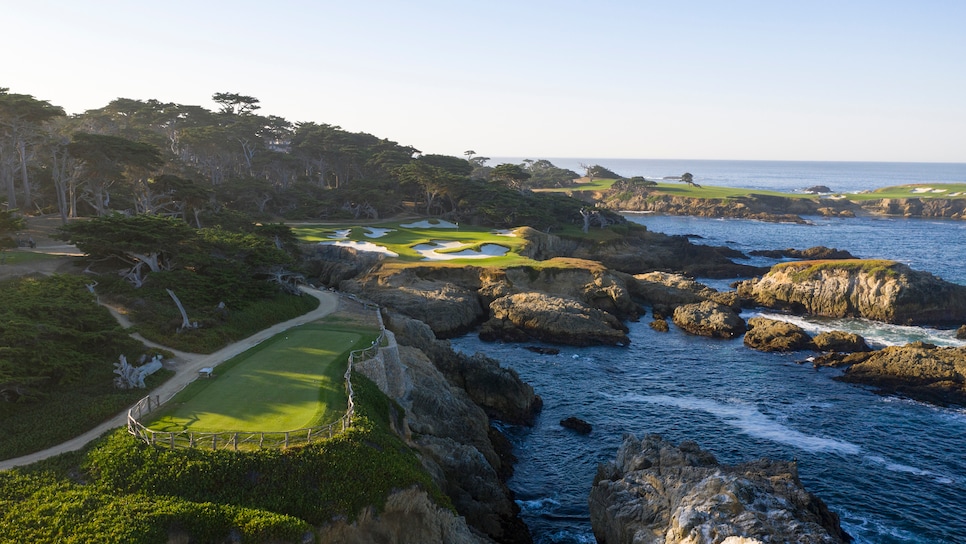
Carlos Amoedo
2 / 7 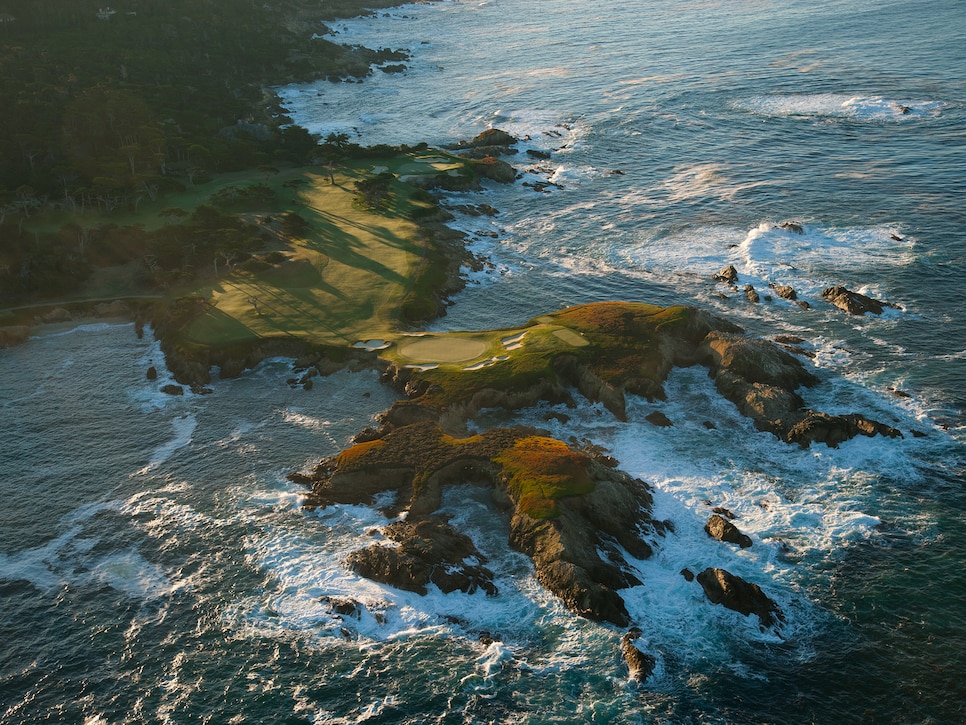
J.D. Cuban
3 / 7 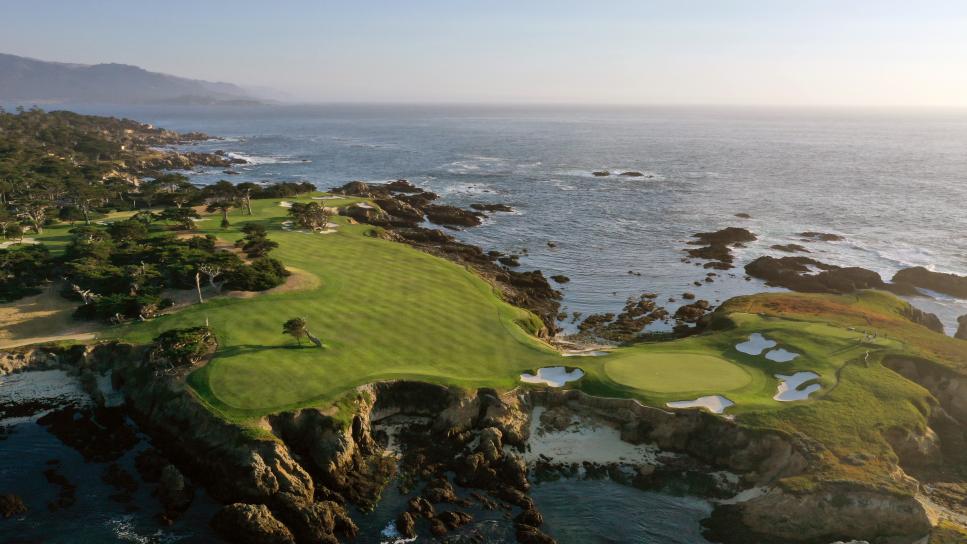
Carlos Amoedo
4 / 7 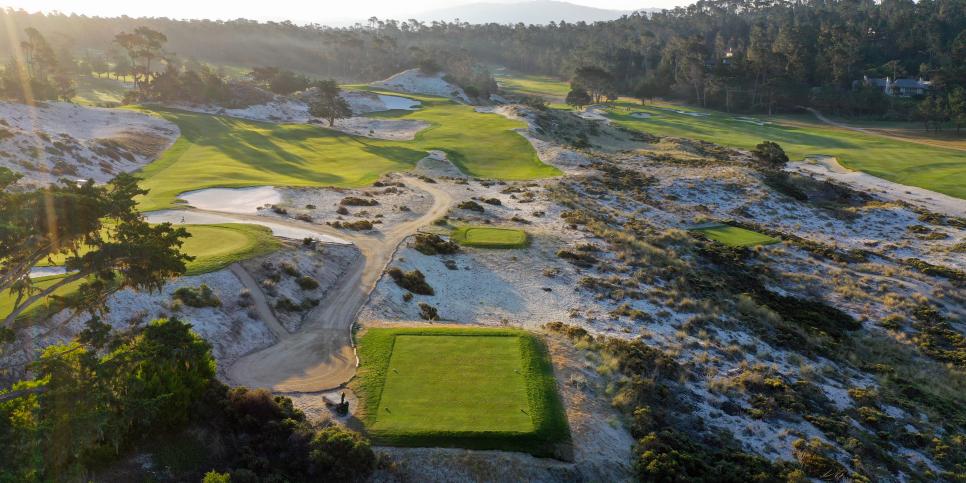 5 / 7
5 / 7 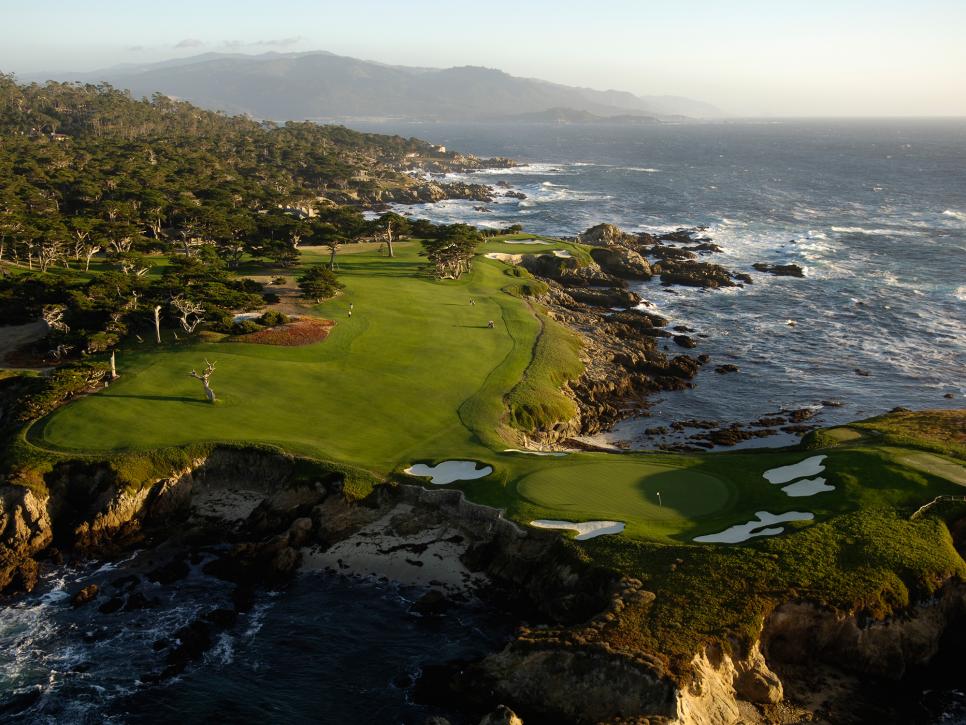
J.D. Cuban
6 / 7 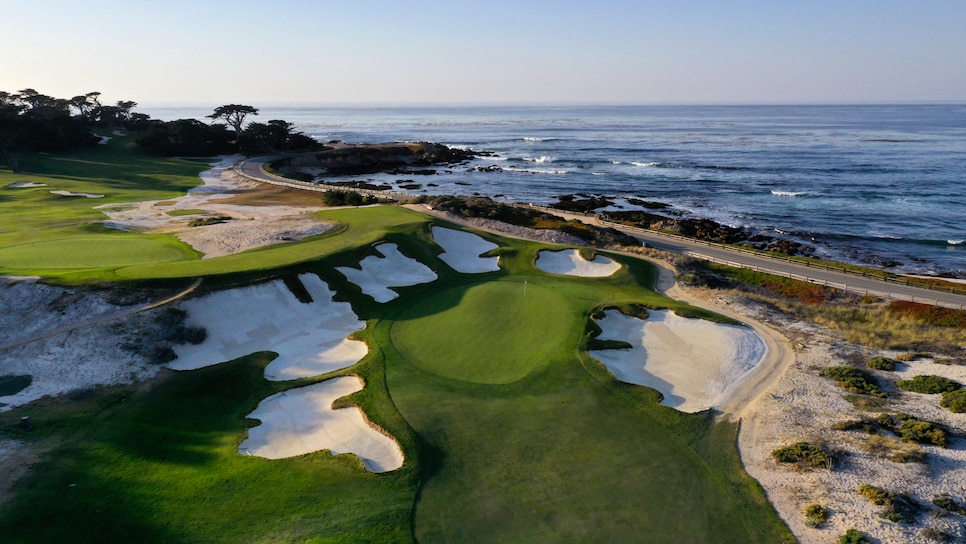
Carlos Amoedo
7 / 7 ](https://golfdigest.sports.sndimg.com/content/dam/images/golfdigest/fullset/2015/07/21/55ad8e80add713143b42e6c9_courses-2013-02-cosl03_cypress_point_618.jpg.rend.hgtvcom.966.690.suffix/1573448858917.jpeg)
Stephen Szurlej




